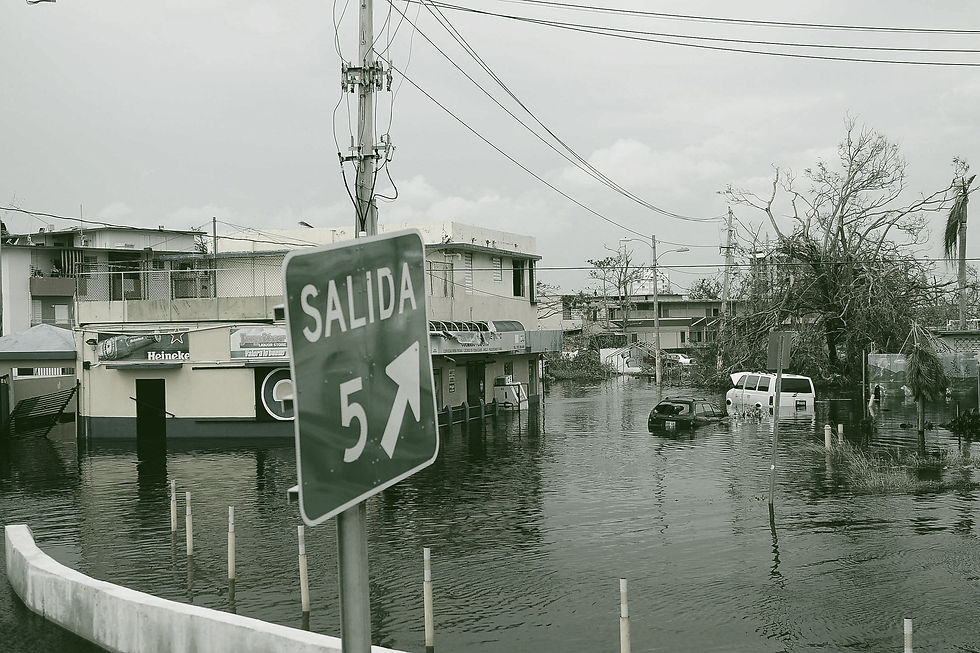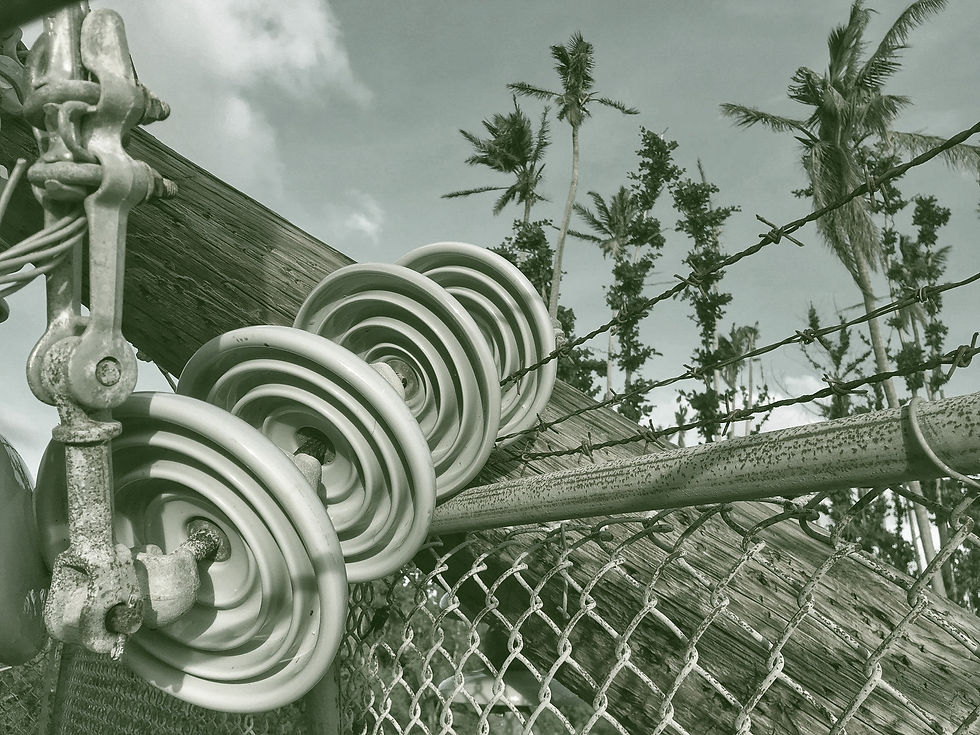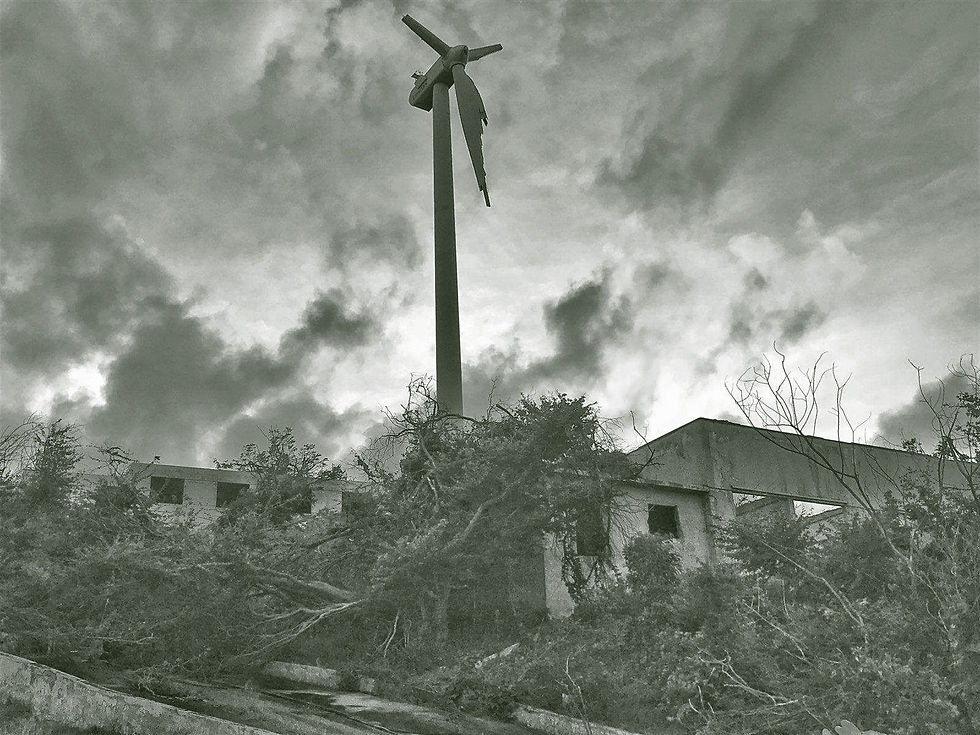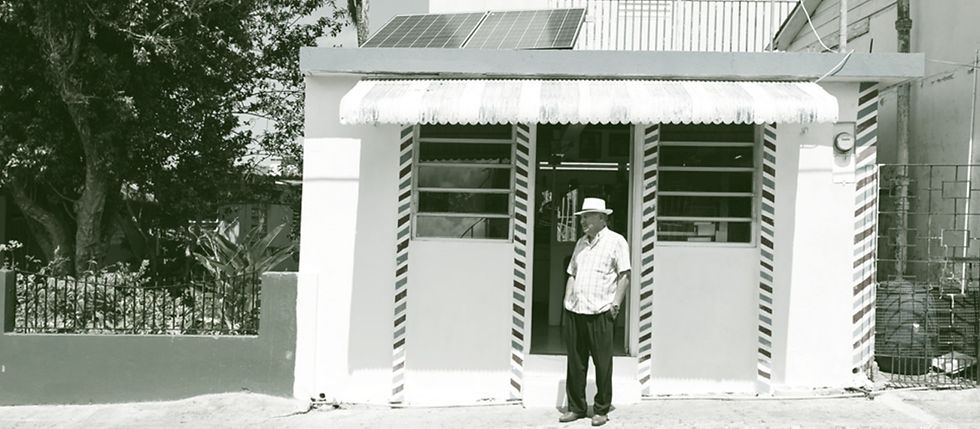Distributed, renewable power is the way forward for Puerto Rico's ravaged grid
- Jon Shieber
- Sep 29, 2022
- 9 min read

Since striking Puerto Rico’s southwest coast on Sunday, September 18, Hurricane Fiona has unleashed landslides, ripped asphalt from roads, and left the Caribbean archipelago without power. Hundreds of people were forced to evacuate as the storm discharged “historic” levels of rain, as much as 30 inches in eastern and southern regions.
Fiona left Puerto Rico last Monday, with Category 1 wind speeds of 85 mph. Now, the first major Atlantic hurricane of the season has progressed to a Category 4 and and hit Atlantic Canada.
As Fiona spiraled through the islands, it weakened and tore down infrastructure built in the wake of Hurricane Maria five years ago. The deadly Category 5 hurricane triggered a calamitous blackout that lasted 11 months. It remains the largest and longest blackout in US history and the second largest in the world.
During Maria, nearly 3,000 people died, and the wounds are still open in many parts of Puerto Rico: over 3,000 homes remain tented with blue tarps after Maria’s 174 mph winds snatched their rooftops in 2017.
That isn’t the only open wound. Fiona’s blackout has renewed critiques of Puerto Rico’s centralized system from environmental groups, residents, and analysts.
Some analysts see microgrids as key to building a more reliable grid while others have called for further implementation of solar, which has seen success amid the storms.

Why is Puerto Rico’s grid so unstable?
For a long time, residents have called the islands’ electricity unreliable. Since Maria, researchers have known that one super storm could land the island state in a similar energy crisis. When Fiona left 3 million people in the dark again, many residents were skeptical that power would soon return; and rightfully so.
This isn’t Puerto Rico’s first blackout this year. In April, Puerto Rico suffered from an island-wide outage, leaving nearly all residents without power and interrupting water service to tens of thousands of homes. While the exact cause of this outage is unknown, not a lot has been done to stabilize the grid since Hurricane Maria.
On the heels of Maria, billions of dollars were allocated to bolster Puerto Rico’s grid and rethink the energy system. But according to Vox a myriad of reasons have inhibited this from happening: “sluggish bureaucracy, poor management, underinvestment, and the inherent difficulty of delivering power on an island.”
Among the laundry list of reasons is, of course, climate change which has rocked the grids of states in the US, most notably California and Texas.
In the wake of Hurricane Maria, it took several years under the Trump Administration for the Federal Emergency Management Agency (FEMA) to approve $9.6 billion in September 2020 to rebuild Puerto Rico's electrical grid. About another $3.4 billion in federal funding has been added since.
According to analysts, distributing the funding stagnated due to bureaucratic holdups like those under the Trump administration, policy disagreements, and grid privatization issues.
In June 2021, Puerto Rico’s grid was privatized. The reason? The state-run Puerto Rico Electric Power Authority (PREPA) was bankrupt and had been long criticized for inadequate investment in its power system and failure to establish backups to maintain power during disasters.
Now LUMA Energy, a joint venture between units of Canadian energy firm ATCO Ltd and U.S. energy contractor Quanta Services, has been operating the infrastructure.
However, a study from the Institute for Energy Economics and Financial Analysis (IEEFA) found that service restoration times and voltage fluctuations increased after privatization largely due to a shortage of experienced workers. Puerto Rico’s governor has even criticized LUMA for not living up to services promised to customers.
“Although I recognize that the electrical network we have is fragile and obsolete, it is Luma’s responsibility to operate it under the critical and emergency state in which it finds itself,” he said when the blackout hit Puerto Rico in April. Even since April’s blackout, ahead of an impending hurricane season, grid experts and residents are asking why more hasn’t been done to strengthen Puerto Rico’s electricity system.
While the company claims it has returned electrical service to 300,000 customers, as of Thursday, nearly 1 million remain without any power and 760,000 without water.
Protesters say LUMA has failed to stop regular power outages in Puerto Rico, and that they are paying far higher energy bills than other U.S. citizens. Many are calling for early termination of LUMA’s 15-year contract.
On Sunday, President Joe Biden approved an emergency declaration for Puerto Rico, freeing up federal resources, including the Federal Emergency Management Agency, for emergency response and disaster relief efforts. Around 300 FEMA responders have been deployed.
In a statement, LUMA said it is “focused on damage assessment, reenergizing and repairing the grid, and restoring power as quickly and safely as possible.” In response to the amassing criticism, they said “When every customer who was impacted by this devastating hurricane has their power back on, we will be more than available to discuss the progress we’ve made and the significant challenges we have faced.“
As LUMA faces swathes of criticism, some observers challenge the notion of changing operators in the midst of an emergency response. “Once the emergency is over, there are no obvious candidates to take over LUMA’s place,” said Sergio Marxuach, policy director of the Center for a New Economy, a Puerto Rican think tank.
As Puerto Rico continues to face environmental threats and deal with an unsteady grid, organizations across the islands are taking matters into their own hands to get reliable power to the archipelago.

What can microgrids do?
While Puerto Rico is eligible for federal funds to restore electricity, what’s known as the Stafford Act limits how FEMA can rebuild after a disaster. FEMA often rebuilds what was there, making it difficult to use federal money to implement more innovative and renewable solutions. Thus, the agency plans to rebuild the grid using fossil fuels.
Natural gas power plants account for 44% of electricity, while 37% comes from petroleum like diesel fuel, 17% is from coal and about 3% from renewable energy, U.S. Energy Information Administration (EIA) data shows.
Despite fossil fuels powering the majority of the territory, under the Puerto Rico Energy Public Policy Act, passed in 2019, the commonwealth is required to get 40% of its electricity from renewable sources by 2025, 60% by 2040, and 100% by 2050, according to the EIA.
Notwithstanding federal support, the grid’s modernization has been vastly delayed by policy disagreements over using renewables versus adding more natural gas, Marxuach told the publication Reuters.
But, some places across the islands are working to figure out a solution.
These solutions could look like installing microgrids or more robust distributed energy resources, which effectively, would rethink the entire island energy system.
“It’s a tricky balance,” said Kaitlyn Bunker, principal for Global South programs at clean energy nonprofit RMI, in reference to restoring power as quickly as possible while building a more resilient grid that can withstand more intense storms.
When Hurricane Fiona hit Puerto Rico, RMI was in the process of installing five microgrids at critical facilities. The equipment survived the storm and RMI hopes to install more across the islands over the next couple of years. But, they face the challenge of getting microgrids to rural and mountainous areas, a massive feat when 60% of the archipelago is covered in mountain ranges.
Separately, scientists from the Department of Energy’s Oak Ridge National Laboratory are partnering with local Puerto Rican organizations, nonprofits, and universities to build resilience into independent microgrids powered by renewable energy. According to the laboratory, ORNL is developing a technology that will manage groups of small microgrids as a cluster, enhancing their reliability even when damaged.
Microgrids are small networks that generally have their own energy supply from nearby renewable sources like wind and solar. If battery storage is added, microgrids can be isolated and function independently in “island mode” when the broader utility network fails.
Already, as a result of ORNL’s research, a community microgrid project is already being installed in the Puerto Rican town of Adjuntas. The Adjuntas microgrids will include solar installations on the roofs of 13 businesses, whose owners agree to provide critical services like medicine, refrigeration, and cell phone charging to residents during major power outages.
Moreover, the income produced by the community-owned microgrids will fund their maintenance and expansion, as well as the installation of independent solar systems for the most disadvantaged Adjuntas residents, the researchers say.

How solar power has helped keep the lights on.
On paper, Puerto Rico is behind in the energy transition, but solar projects are playing an outsized role on the islands, landing Puerto Rico in the top ten places in the U.S. with the most solar installations. These panels have helped some Puerto Ricans avoid the blackout caused by Hurrciane Fiona.
According to a study by the National Renewable Energy Laboratory, solar panels have just a 0.05% failure rate when it comes to reliability and lifespan. A separate preliminary study by the Lab showed that Puerto Rico is well placed for a transition to solar power. Their results show that the territory can produce over four times the amount of energy it needs from rooftop solar power thanks to how much sunlight the island is exposed to.
Solar installation on the islands is largely due to local community organizers. Casa Pueblo, a community-run NGO is at the forefront of the solar transition. In the last few years, organizers have installed solar energy systems in over 100 hundred homes and over 30 businesses in the mountainous Adjuntas – the same town where ONRL’s microgrids are being installed.
According to the organization, they are currently working on installing solar panels and batteries in lower-income homes and businesses. Their previously installed solar was able to power through the storm.
“A home in the countryside where a bedridden person lives with their caregivers. They don't have energy from Luma, but they do have energy – even in the middle of a storm, because they continue generating a little [solar energy]. They've adjusted their consumption, and they have a backup battery,” the organization wrote in a tweet in Spanish.
“This should be a reality for everyone, especially people who have relatives with chronic health conditions,” Casa Pueblo added.
Casa Pueblo is not alone in the fight to scale solar in Puerto Rico and build energy resilience.
Nonprofits like Solar Responders have worked to install solar panels in fire stations on the island to ensure first responders are able to continue their work when the electric grid fails. They have brought renewable energy to nearly 20% of Puerto Rican fire stations.
Marvel Architects, a firm based in both New York and Puerto Rico, designed houses where the power stayed during the hurricane. These houses are prototypes that are fully off-grid and powered by solar.
The small mountain city of Caguas donated the land and a nonprofit called Acacia paid to build the homes as an example for communities, with plans to build hundreds more across the island and help residents build their own.
These prototype houses were not only able to keep the lights on, but with thick, reinforced walls, they’re designed to survive earthquakes and hurricane-force winds and keep their occupants warm or cool depending on the situation, according to Fast Company, .
Marvel, who was born on the island, started working to help bring power to the most vulnerable communities through another project, which became a nonprofit called Resilient Power Puerto Rico.
The nonprofit has helped build 38 “solar hubs” at community centers. These hubs have solar panels and battery systems that can provide electricity for community members during emergencies and during the island’s frequent blackouts. They also help Puerto Ricans build their own projects, putting energy autonomy back into the hands of the people.
The demand for solar and microgrids are clear, but when the average median household income in Puerto Rico is just over $21,000, the vast majority of people cannot afford to install things like solar panels on their roofs.
Thus, the need to go solar has largely been left to the hands of nonprofits, like Casa Pueblo, Resilient Power, and RMI. In many cases, however, it's been left in the hands of individuals themselves, rather than the government.
The Casa Pueblo team is working to distribute over 2,000 solar lamps to their community. On Facebook, they posted a picture, raising a blue and green flag with a yellow sun in the center outside of their headquarters. To them, this is a symbol of “energy insurrection.”
They wrote in Spanish: “We’re summoning the government to build energy security for all.”
Some of the biggest names in solar power manufacturing see the situation in Puerto Rico as a tragic validation of the benefits of solar energy and storage distributed to neighborhoods -- or even installed in individual homes.
"It's showing that renewables paired with storage ... are really the fundamental building blocks of a clean recovery that we need to really focus on on the island and elsewhere," Chris Rauscher, senior director of public policy at Sunrun, told National Public Radio in a recent interview.
Earlier this year, Sunrun and LG Chem (a huge Korean battery company) announced that they'd launched Lunar Energy to provide these kinds of solar and energy storage equipment and services for homeowners.
"More than ever, we need rapid adoption of renewable energy solutions across all sectors to mitigate climate change," said Kunal Girotra, the founder and chief executive of Lunar (and a former exec in Tesla's energy group). "Lunar Energy was founded to build affordable hardware and software products for the residential sector to help homeowners generate, store and consume 100% clean energy and remove the usage of fossil fuels from every home."
Solar's ability to provide reliable electricity in the face of climate disasters are "a window into the future," according to Sunnova chief executive, John Berger.
'"The technology's just physically and fundamentally better," than the traditional power system, Berger told NPR. "And that's not going to change."


Comments